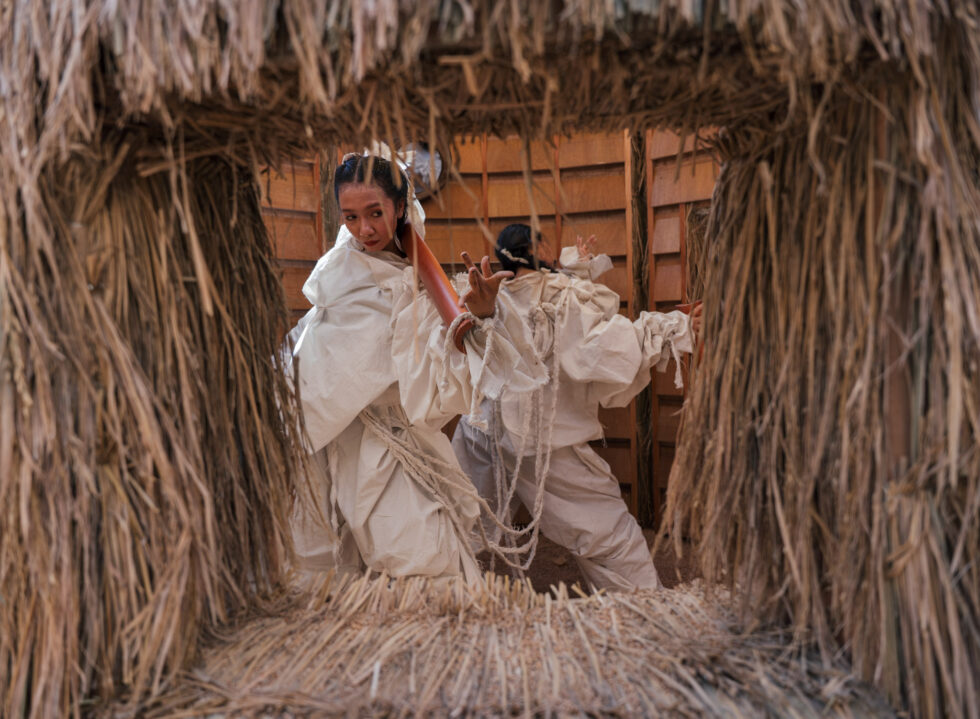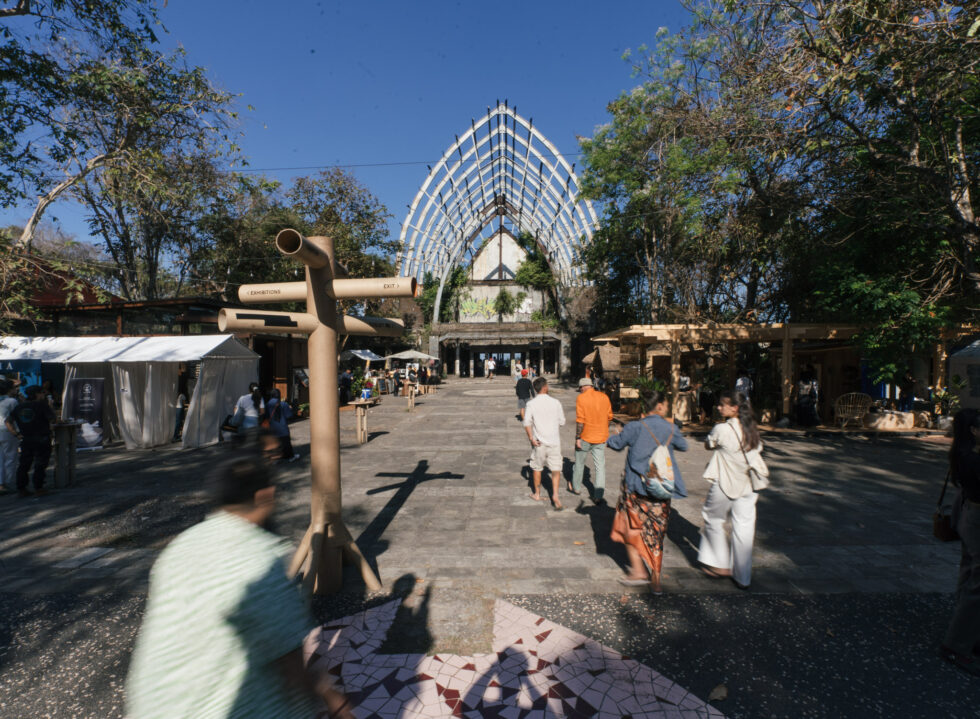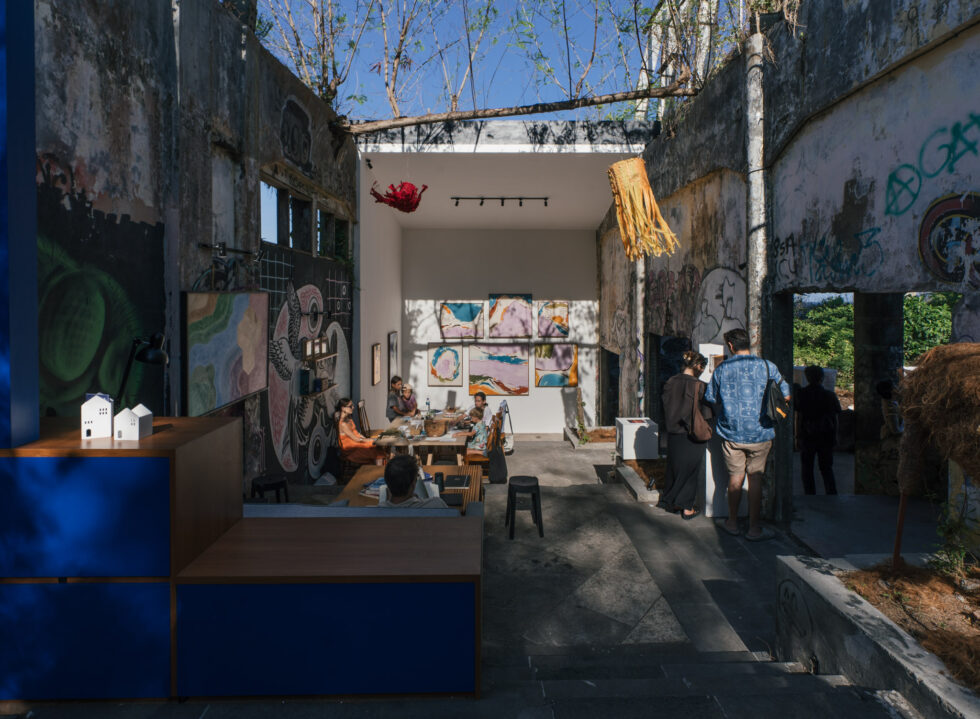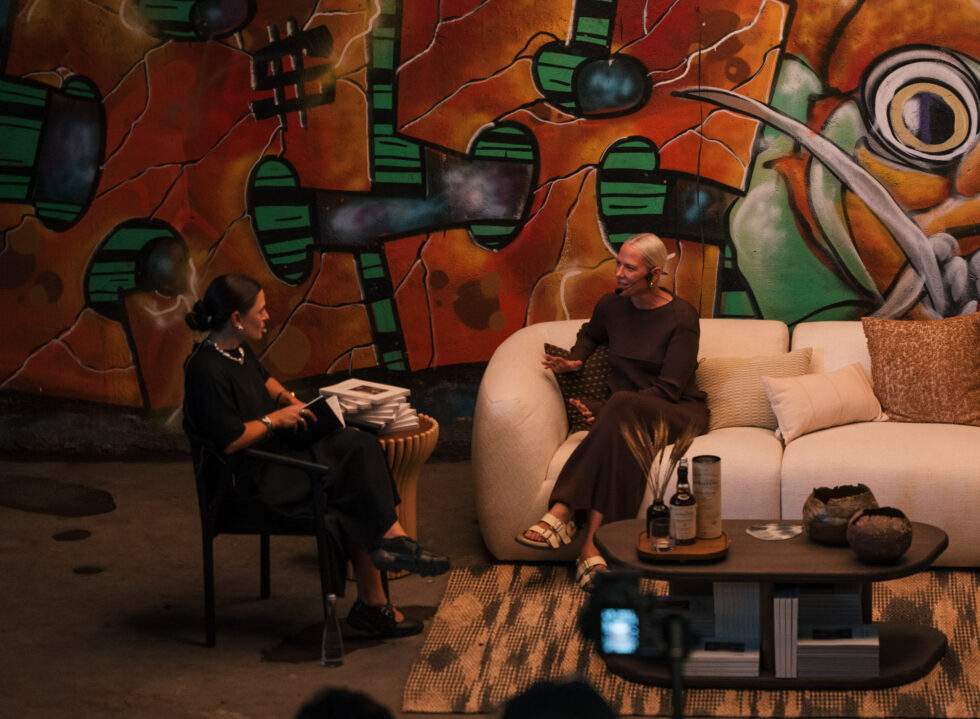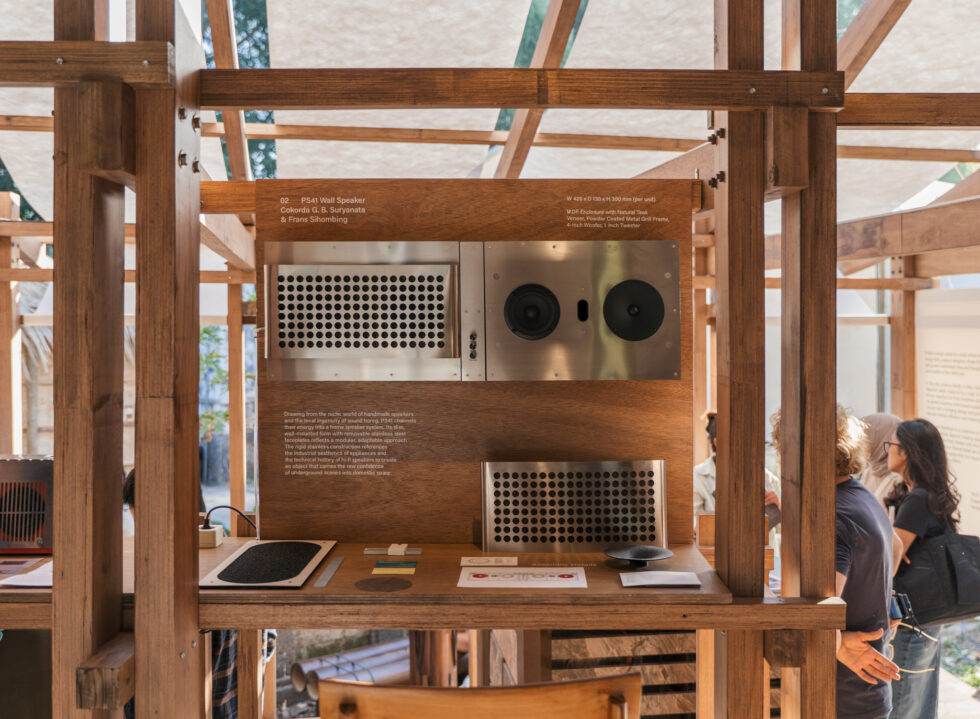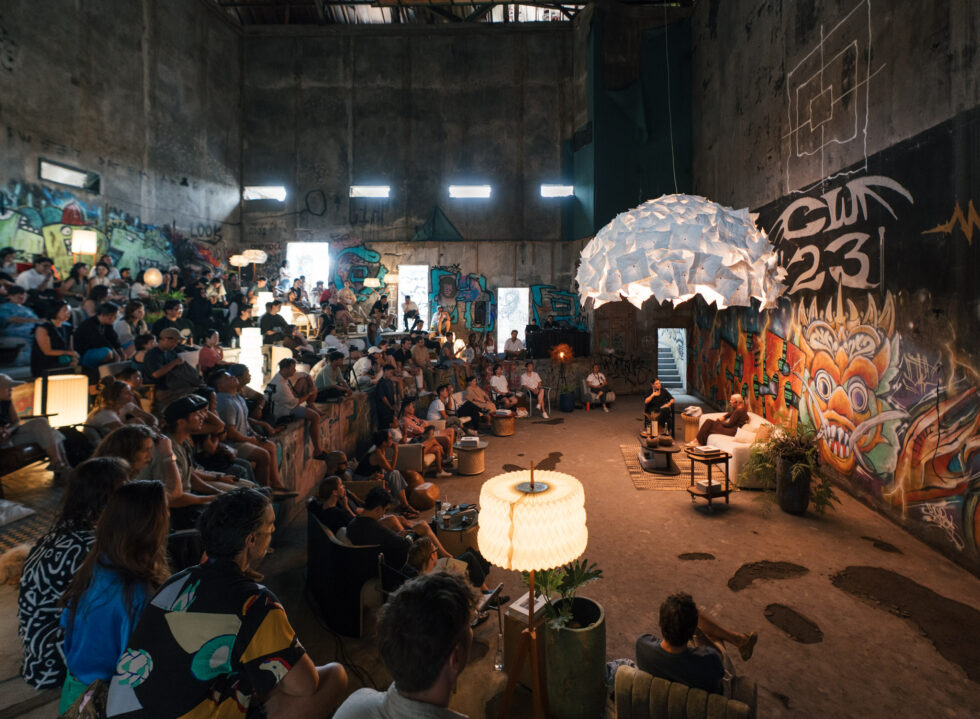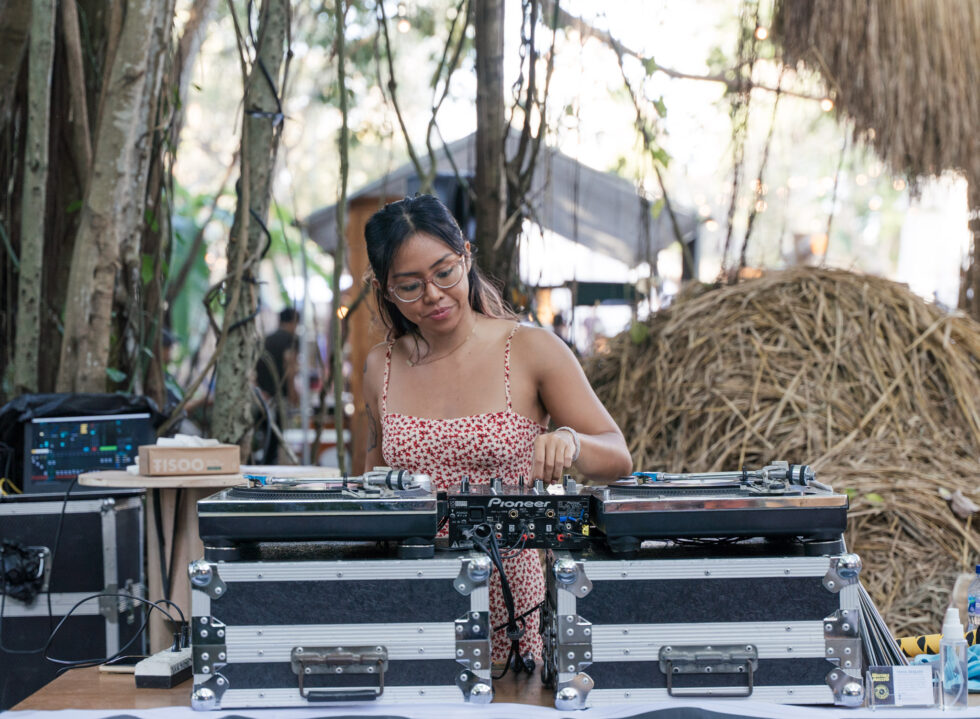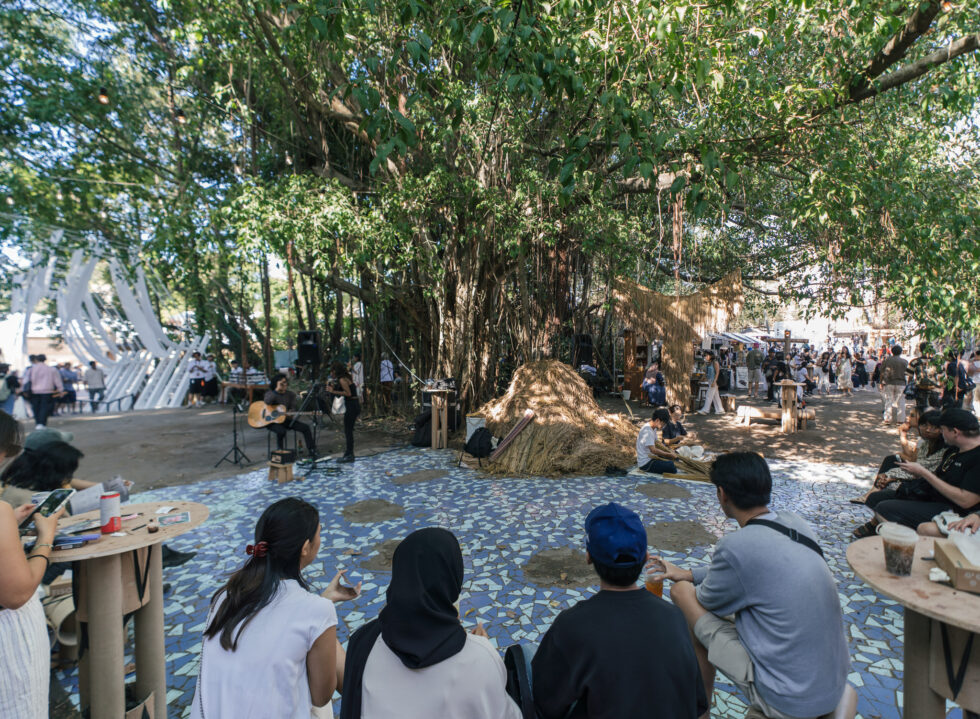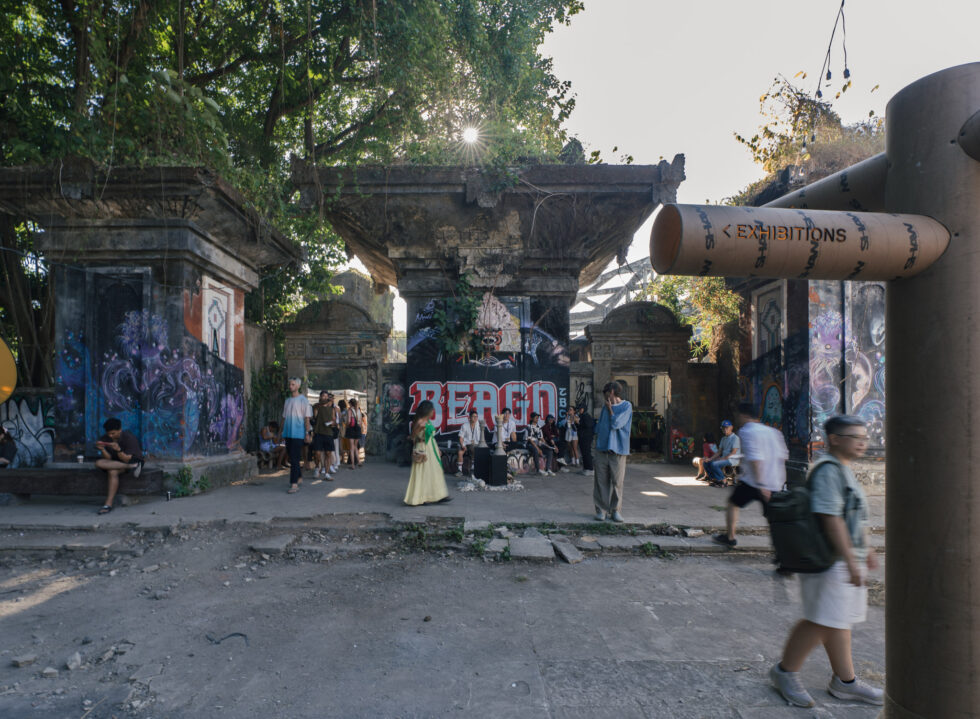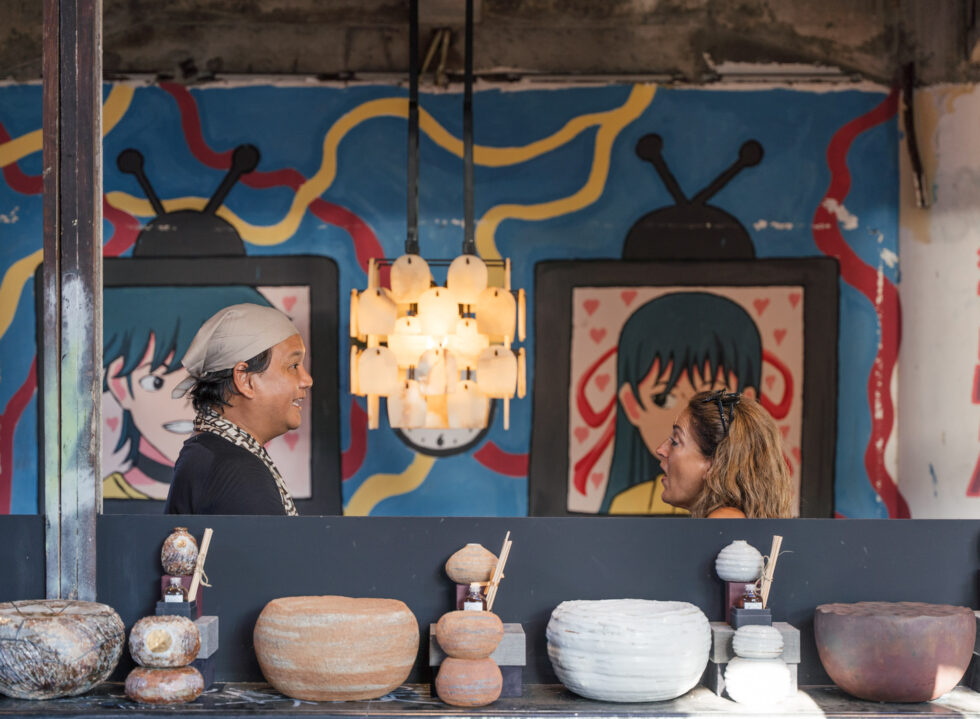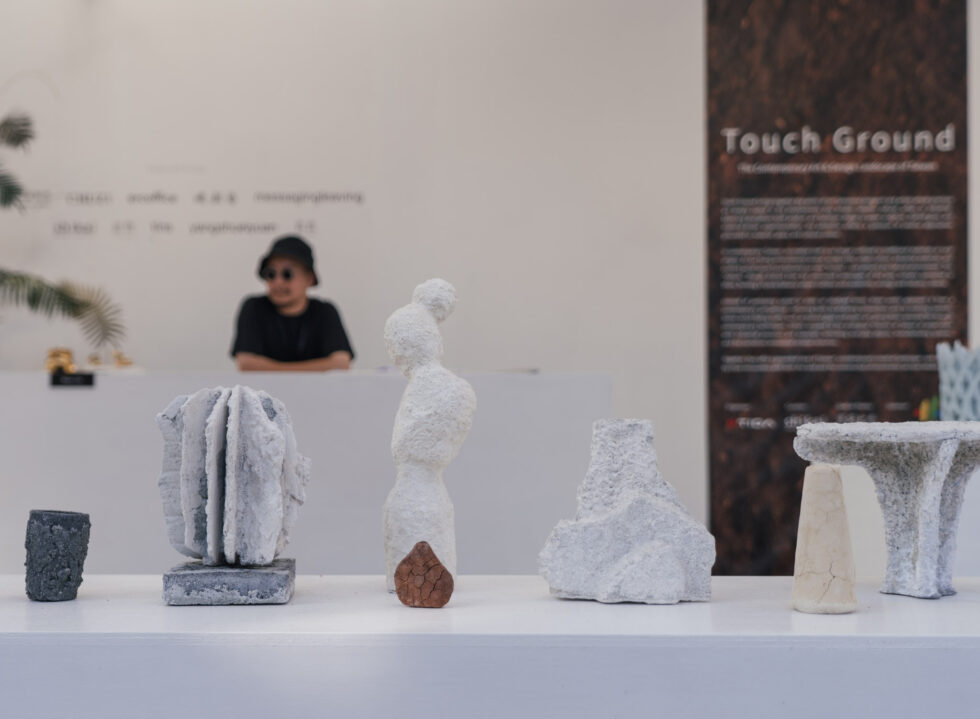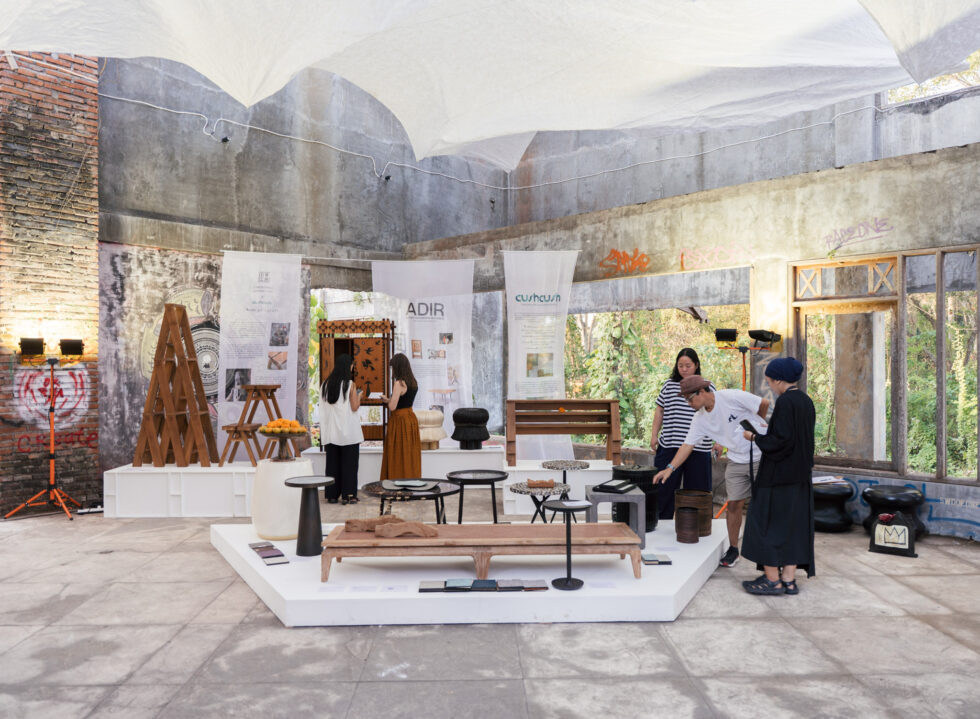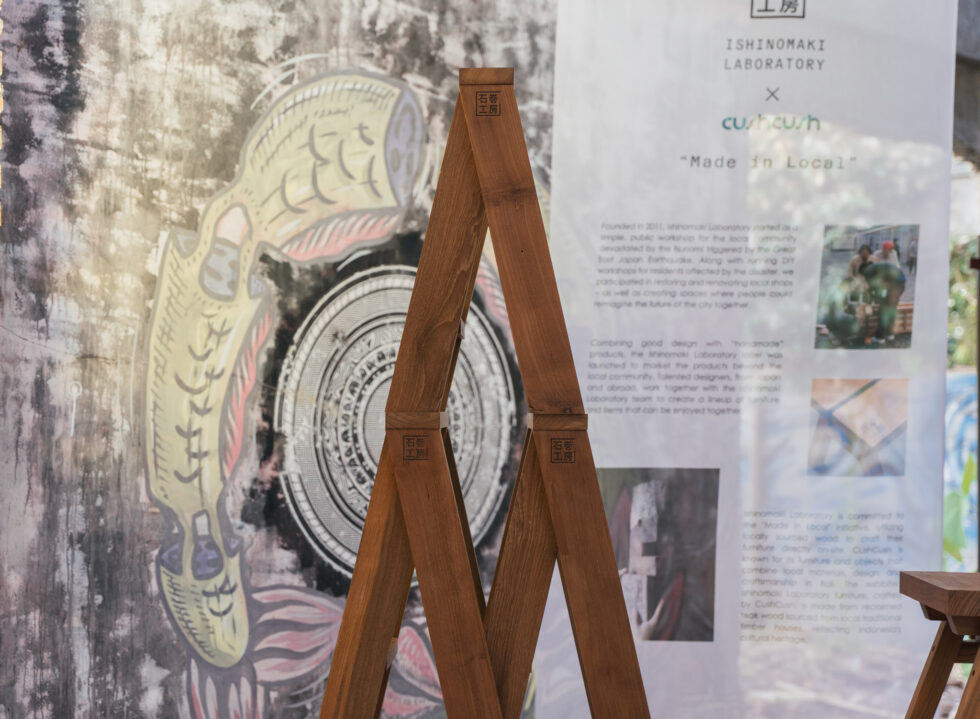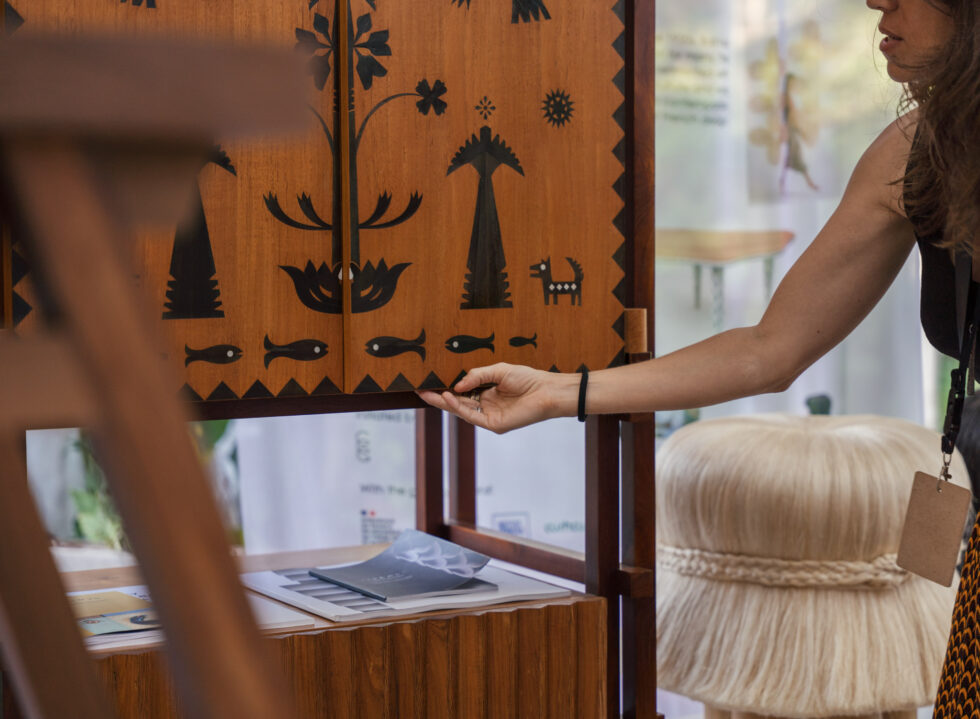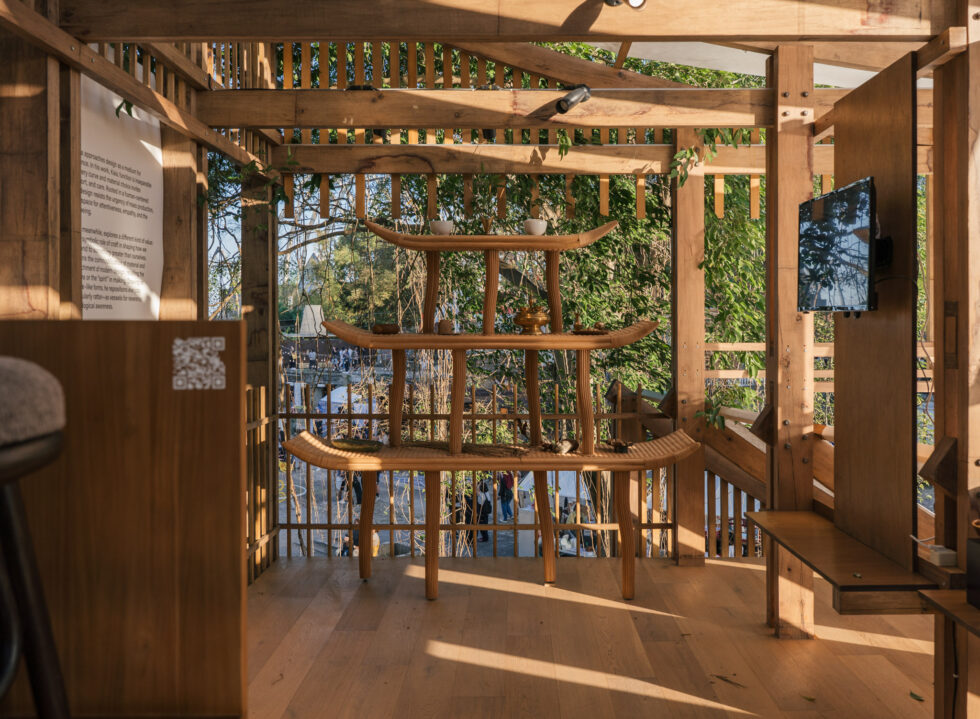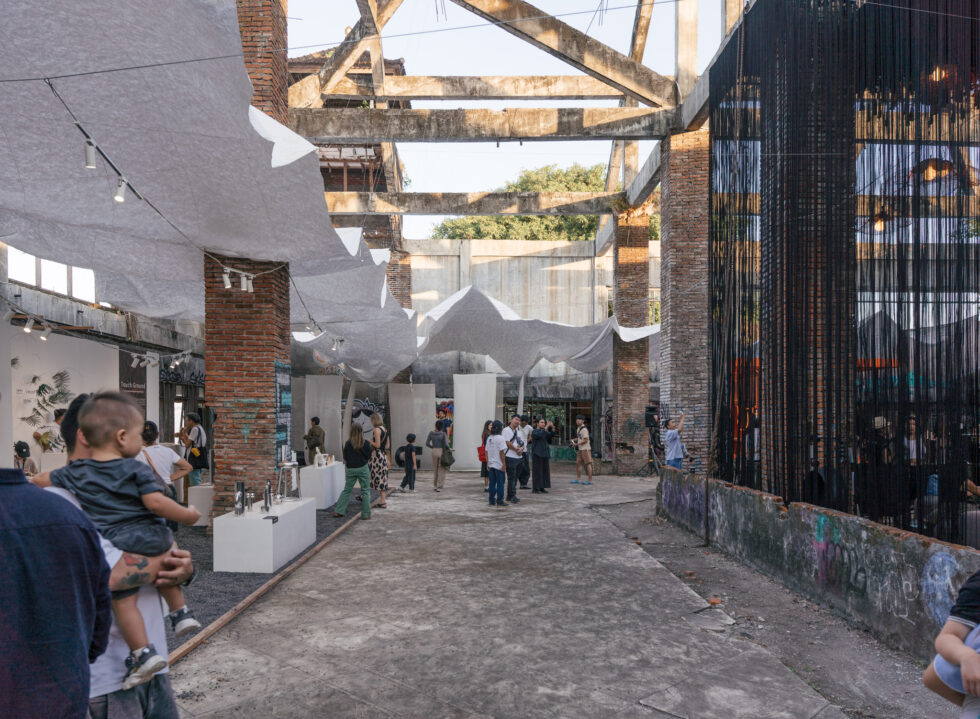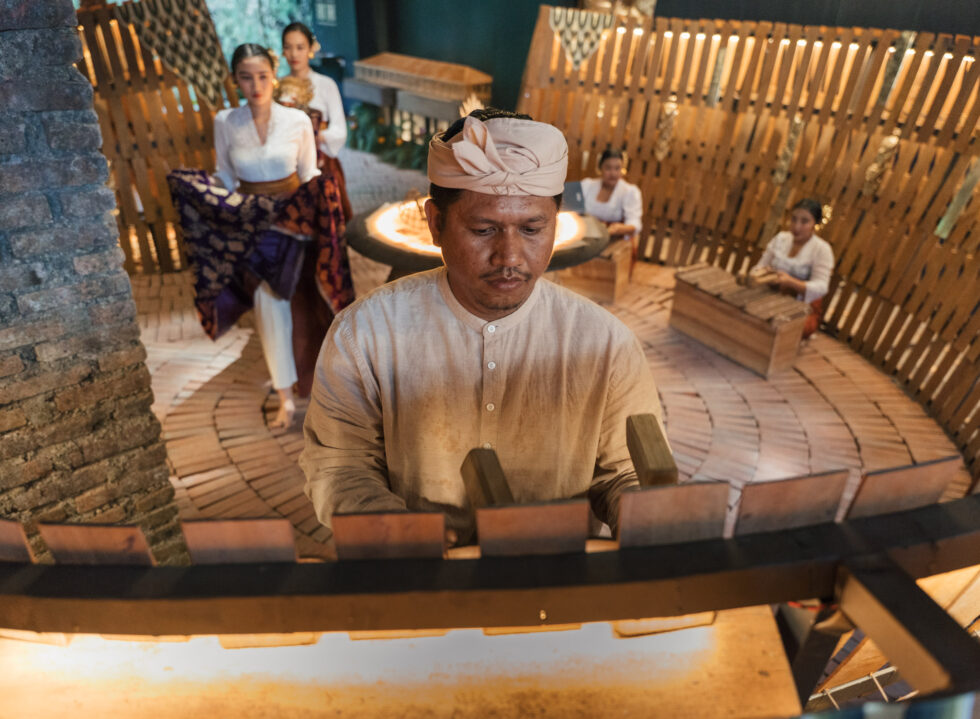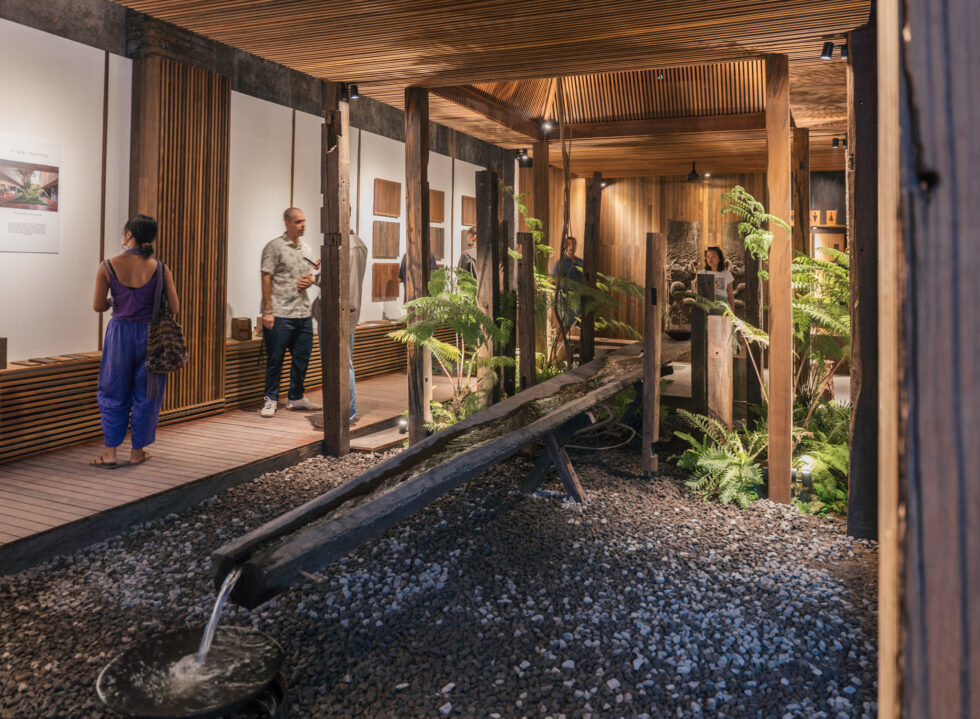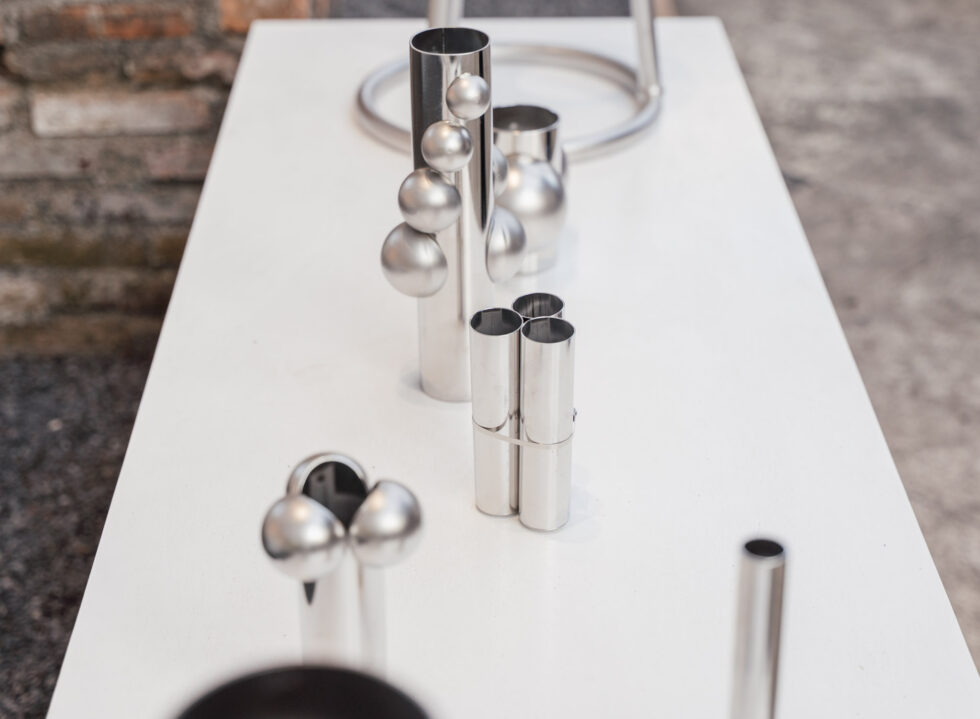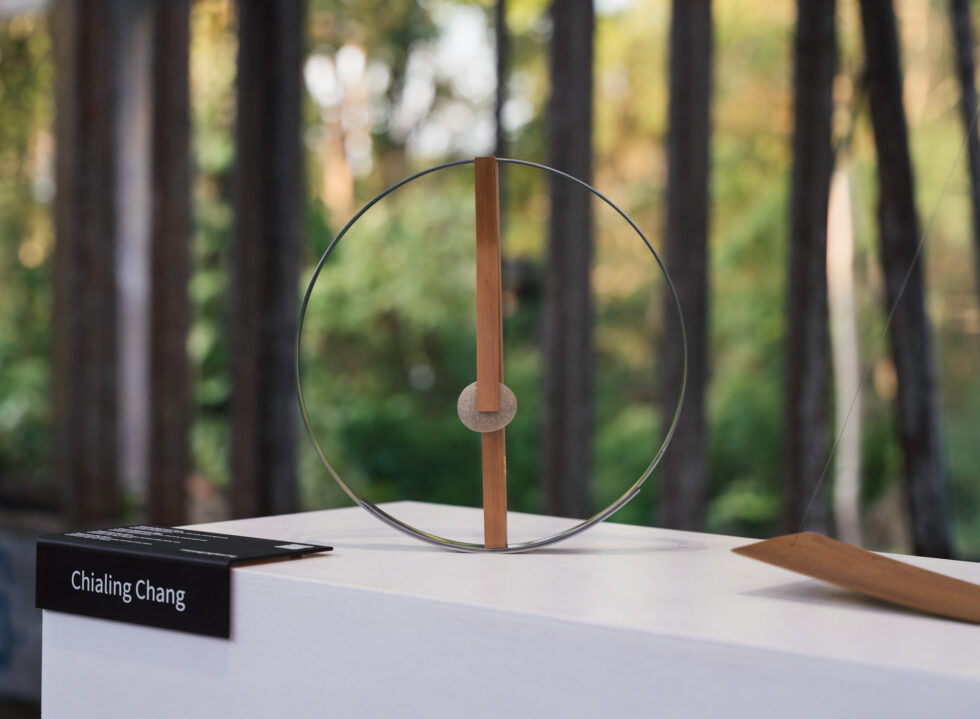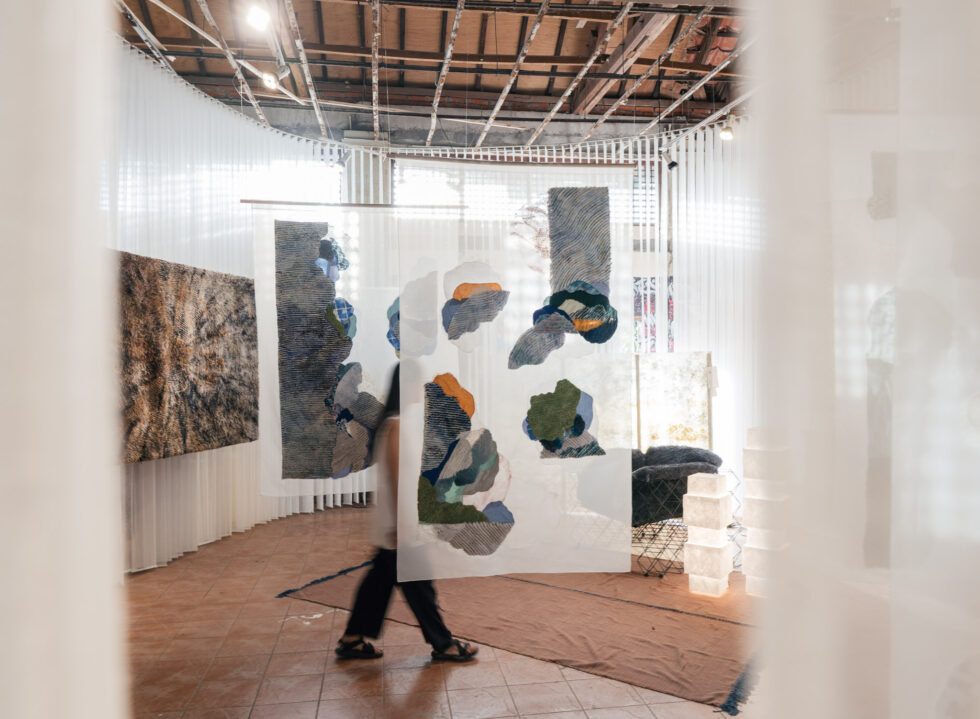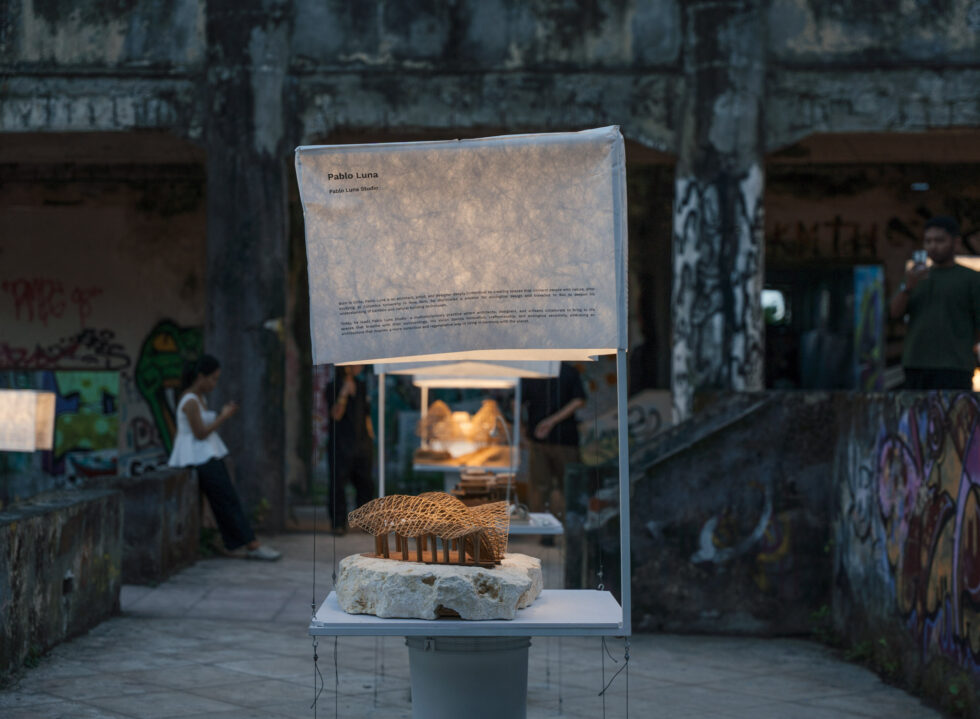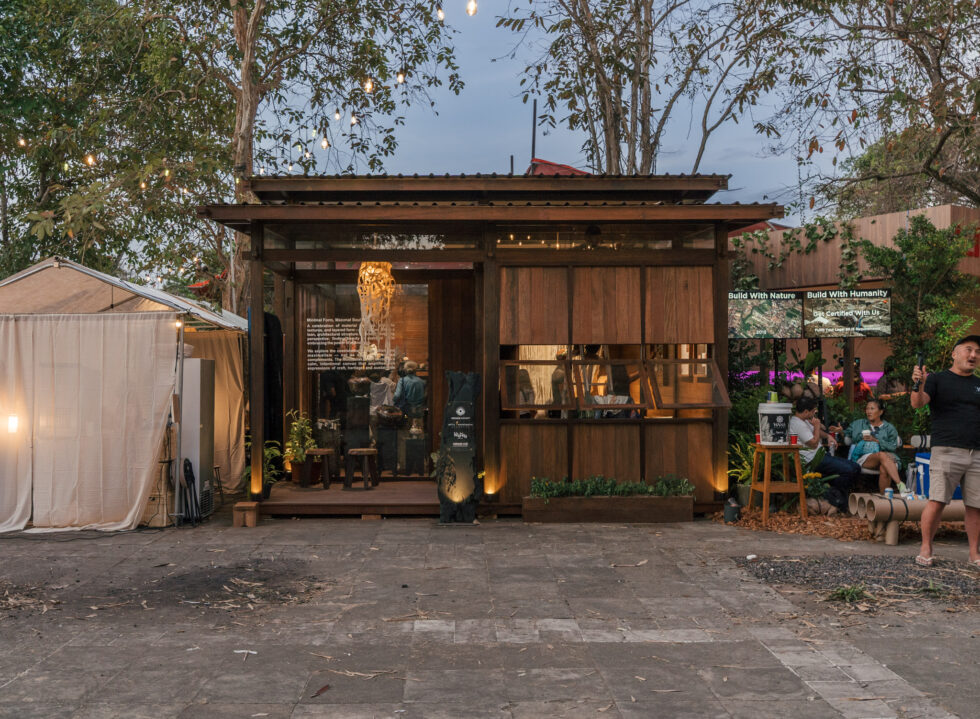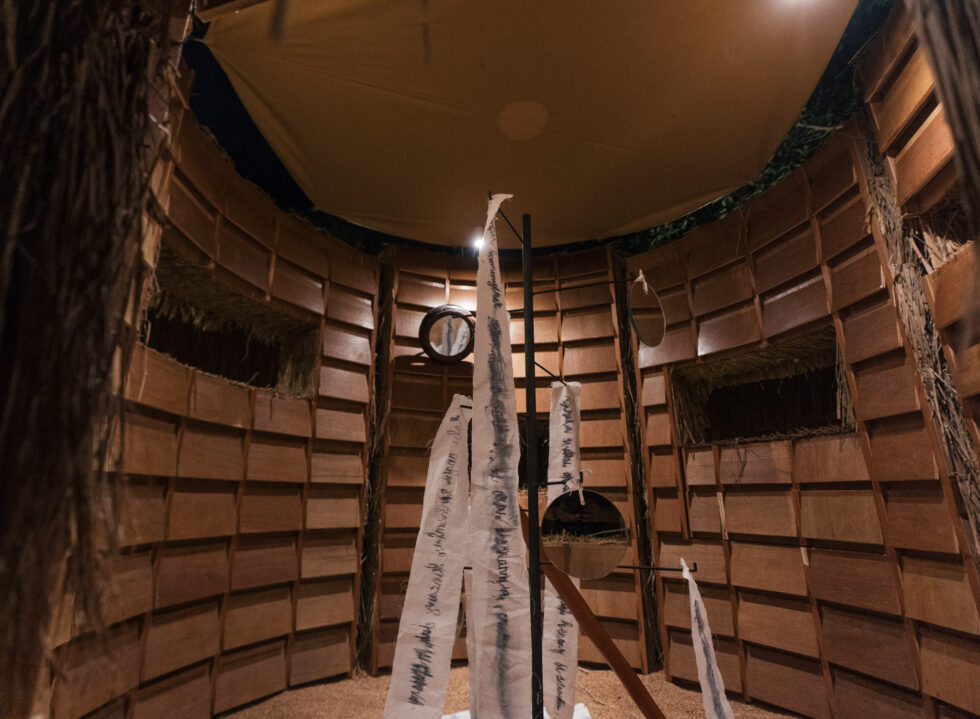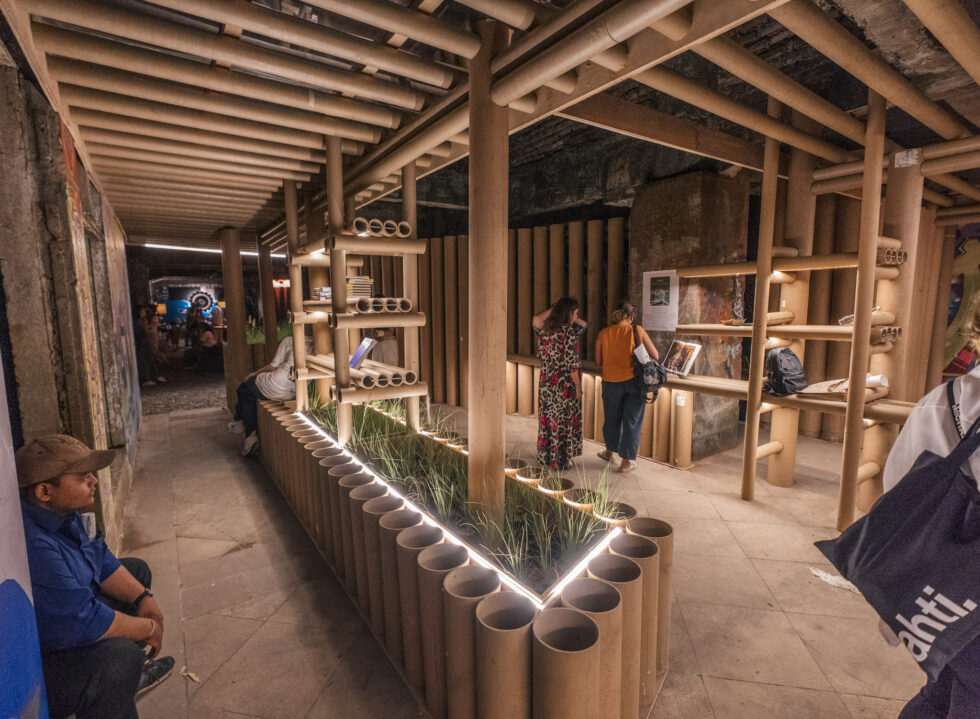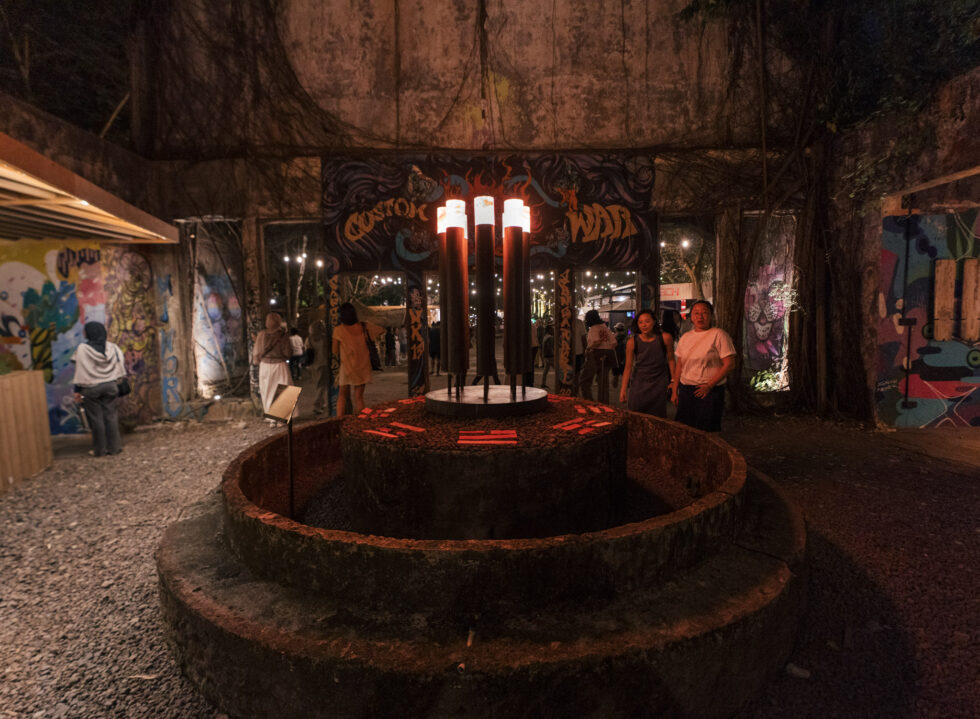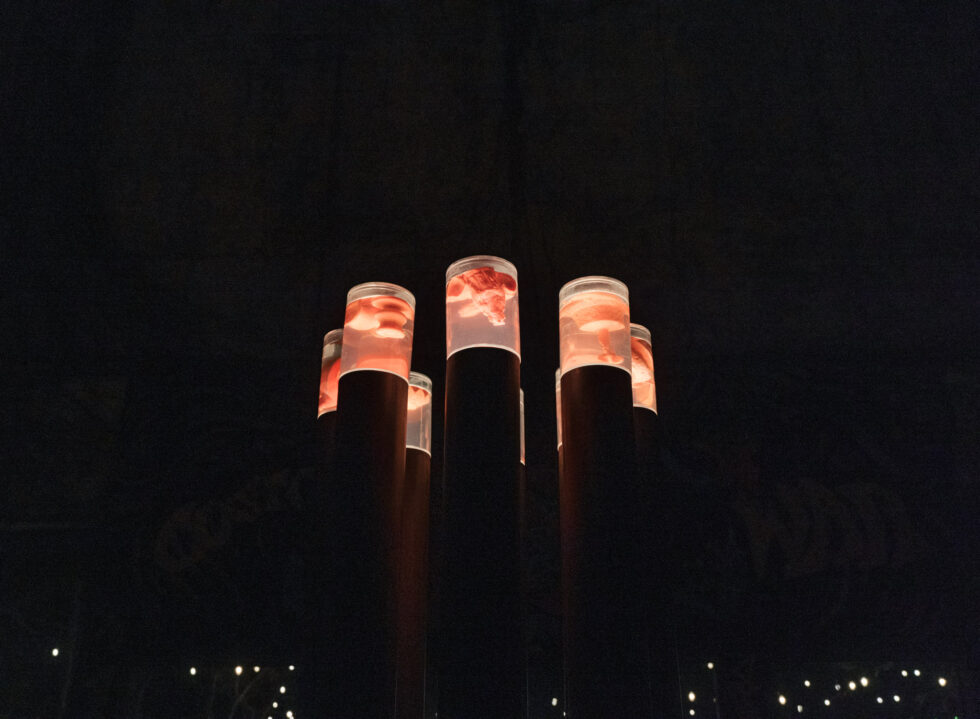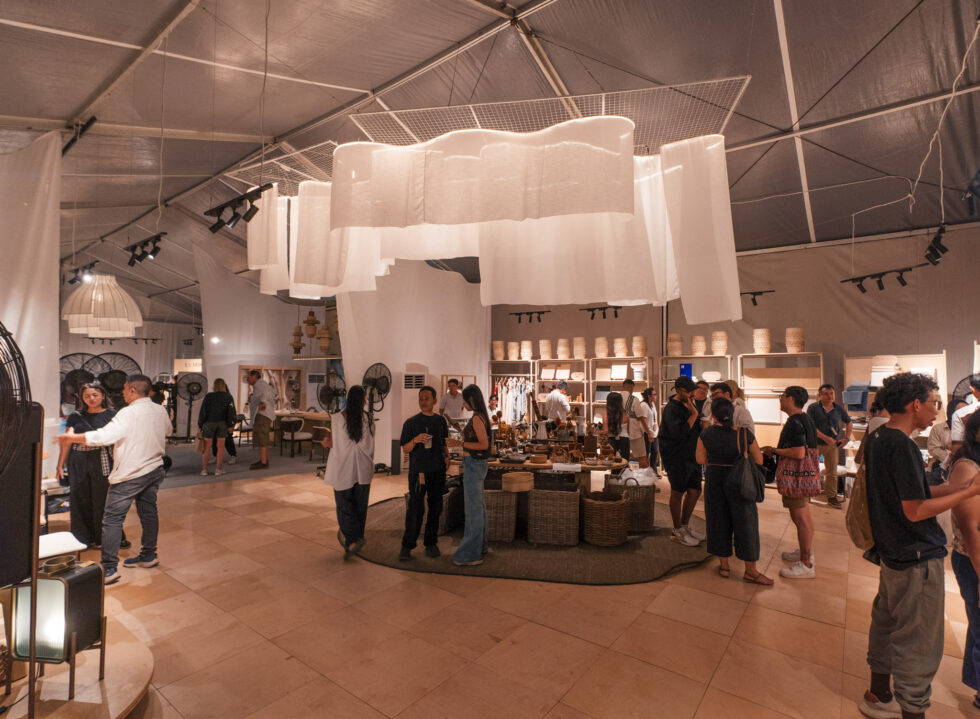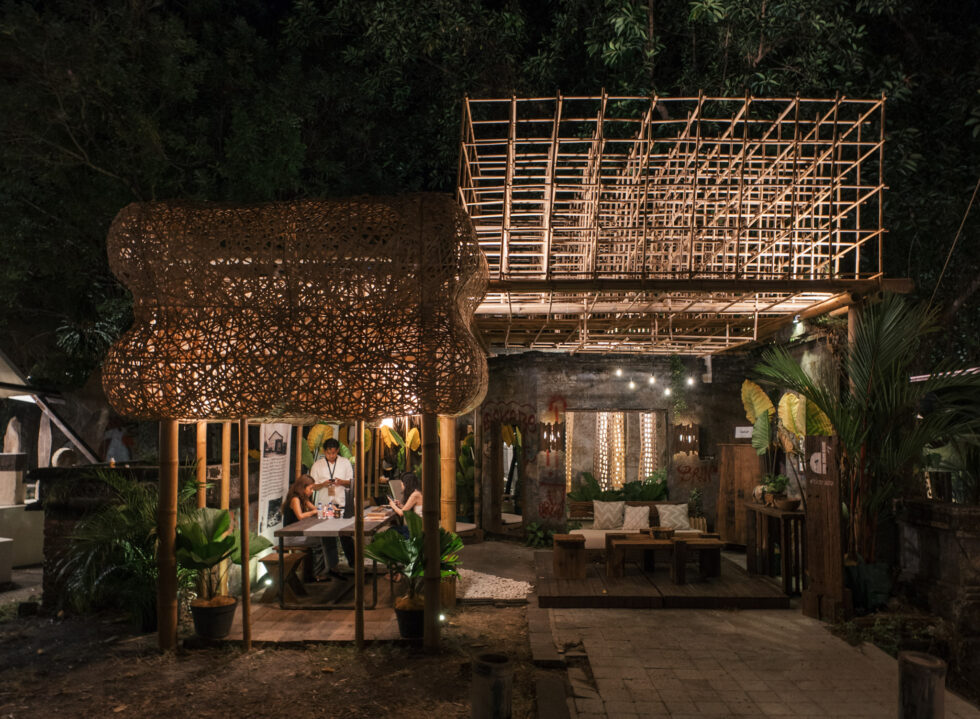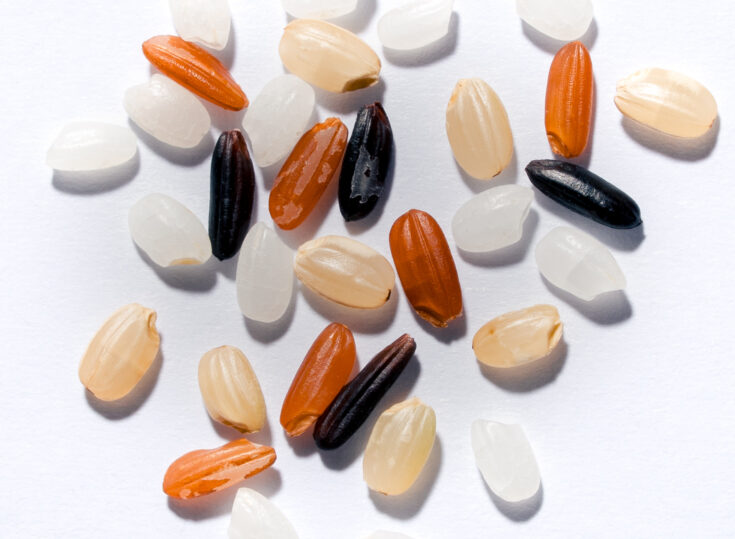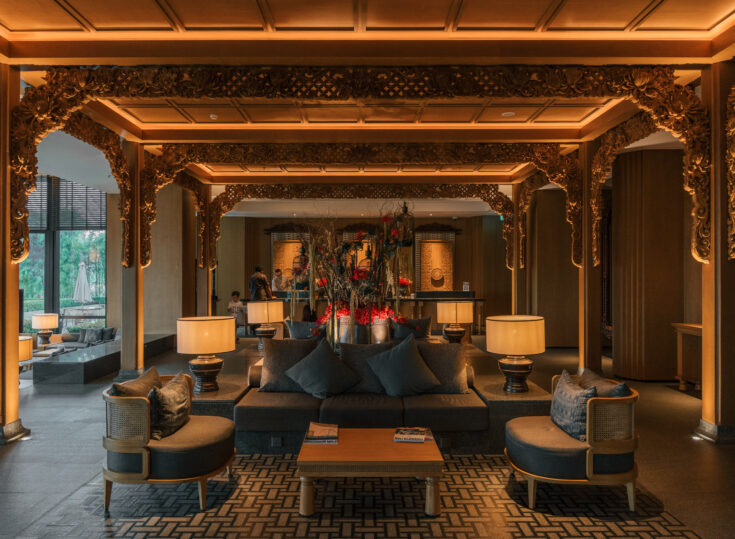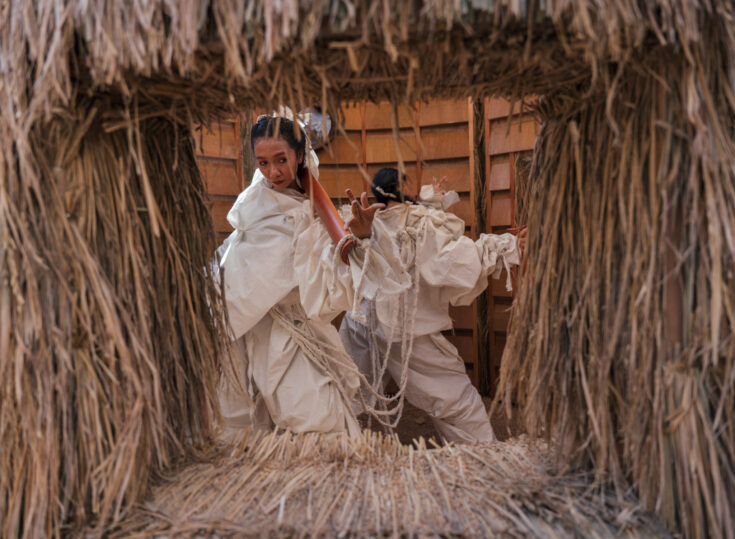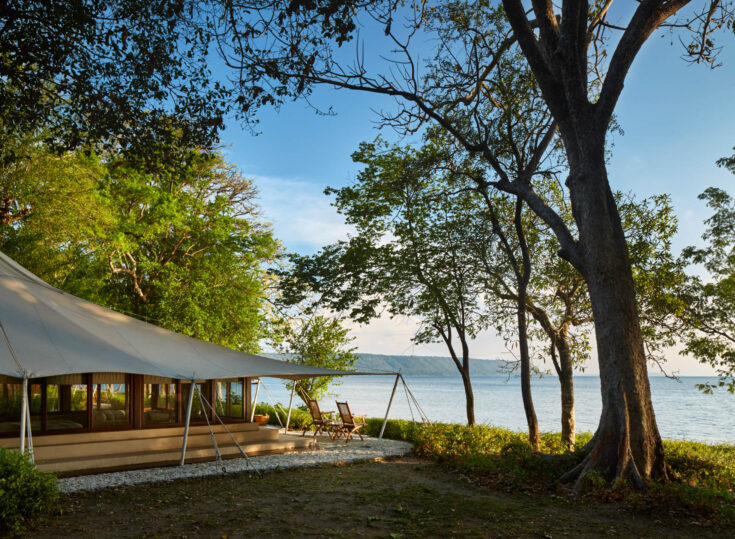The annual Jia CURATED returned to Bali Festival Park this year, transforming the long-abandoned amusement grounds into a site of design, craft, and conversation. Now firmly regarded as one of the region’s leading design festivals, the gathering continues to convene an international and local roster of exhibitors, speakers, and creatives, cementing its role as a catalyst for Southeast Asia’s evolving creative dialogue.
This year, the theme Evolving Perspectives manifested across installations, performances, and exhibitions scattered throughout the site. Together with multidisciplinary artist Lianggono Susanto, The Balvenie explored materiality and memory through their Wang Sinawang pavilion; constructed from hay bales, the pavilion’s looping corridors and carefully placed openings offered fleeting glimpses of the installation and dance performances, reflecting the whisky brand’s legacy of craft and process.
Artist Metta Setiandi presented a site-specific work, Fragments of Hope, reinterpreting the daily rituals of prayer through wax miniatures of temples from her Glodok neighbourhood. Meanwhile, husband-and-wife duo Avalon Carpenter and Conchita Blanco of KalpaTaru and Blanco Studio used timber offcuts and raw, unprocessed wood to highlight the unique character and processes of teak.
Returning for the second year in a row, 360 Design Dialogues by Design Anthology brought speakers such as Dutch artist Sabine Marcelis and Mexican designer Fernando Laposse, whose work turns materials like industrial resin and plant fibres into compelling explorations of art and culture.
Graffitied walls, rusted fixtures, and sprawling roots became part of the narrative, shaping the way installations were experienced and perceived.
Among the festival’s new initiatives was Waste to Wonder, a programme celebrating creation from discarded materials. Led by Lagilagi and Cushcush Gallery, it invited young creatives to rethink waste through hands-on experimentation. In collaboration with ISI students, a pre-festival workshop transformed cardboard tubes into stools, benches, and wayfinding signage scattered across the site, as well as a modular bookstore designed by architect Andra Matin.
Architecture in Scale showcased 24 architectural models from across the region, drawing focus away from completed buildings and toward the ideas, negotiations, and processes that shaped them. Maquettes by Ibuku, Pablo Luna Studio, and Studio Dasar glowed softly as night fell, their warm illumination drawing visitors into a quiet, contemplative state, which was further heightened by the sound of lapping waves from the nearby coast.
The passage from day to night continued in Ong Cen Kuang’s twisting ‘mushroom’ copper lamps, suspended above resting visitors where they cast shifting shadows across the sofas below. Notably, on one evening, these lamps became a frame to the powerful performance by a group of deaf dancers from Kita Poleng Bali, whose movements responded not to music but to the rhythms of their own heartbeats.
It becomes unmistakably clear that design at its best does not erase but reframes the familiar, and in doing so, opens up new possibilities for how we understand and inhabit our surroundings.
Collaboration, or the spirit of ‘gotong royong’, also remained central to Jia Curated’s ethos. Millimeter Manifesto gathered nine designers alongside Studio Aliri and Studio Woork within a modular, three-story Serumpun Pavilion, presenting works ranging from Alvin Tjitrowirjo’s ‘Jiwa’ tiered rattan shelf to Hendro Hadinata’s hanging lamps. Dedicated pavilions also highlighted Taiwanese craft with guest curator Shi Kai Tseng of Studio Shikai, reinforcing the festival’s commitment to cross-cultural exchange.
Yet even as it celebrated the exchange of new and evolving ideas, the festival remained attentive to the park’s existing textures. Graffitied walls, rusted fixtures, and sprawling roots became part of the narrative, shaping the way installations were experienced and perceived.
In this way, the festival itself embodied its theme. Evolving Perspectives unfolded not only through installations and dialogue, but through the transformation of the derelict park, its decay animated through light, sound, and moments of gathering. It becomes unmistakably clear that design at its best does not erase but reframes the familiar, and in doing so, opens up new possibilities for how we understand and inhabit our surroundings.
